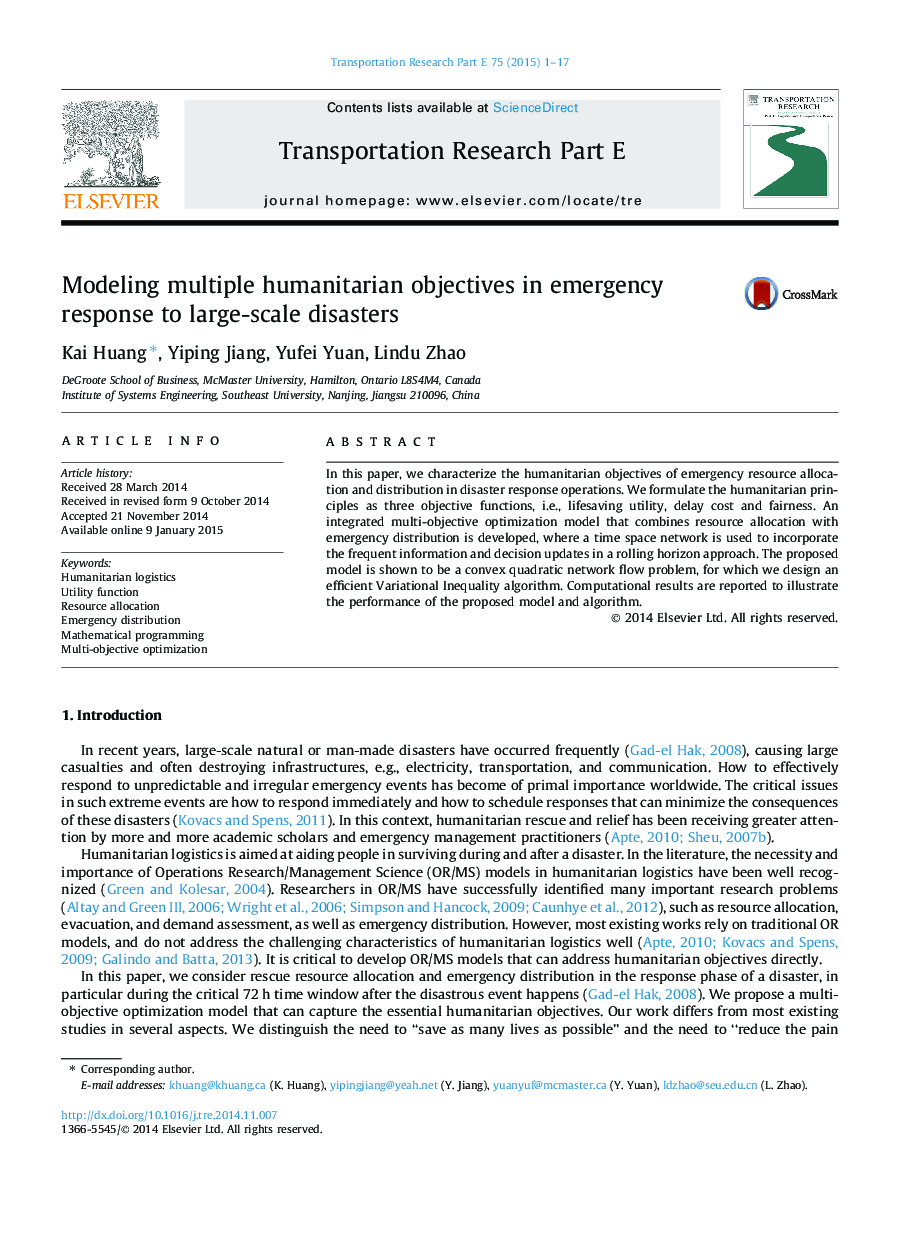| Article ID | Journal | Published Year | Pages | File Type |
|---|---|---|---|---|
| 1023207 | Transportation Research Part E: Logistics and Transportation Review | 2015 | 17 Pages |
•We characterize the humanitarian objectives of emergency resource allocation and distribution in disaster response operations, involving lifesaving utility, delay cost and fairness.•Resource allocation and emergency distribution are determined jointly.•A time space network is used to incorporate the frequent information and decision updates in a rolling horizon approach.•A case study on the Great Sichuan Earthquake in 2008 is used to illustrate the managerial implications of the model.
In this paper, we characterize the humanitarian objectives of emergency resource allocation and distribution in disaster response operations. We formulate the humanitarian principles as three objective functions, i.e., lifesaving utility, delay cost and fairness. An integrated multi-objective optimization model that combines resource allocation with emergency distribution is developed, where a time space network is used to incorporate the frequent information and decision updates in a rolling horizon approach. The proposed model is shown to be a convex quadratic network flow problem, for which we design an efficient Variational Inequality algorithm. Computational results are reported to illustrate the performance of the proposed model and algorithm.
